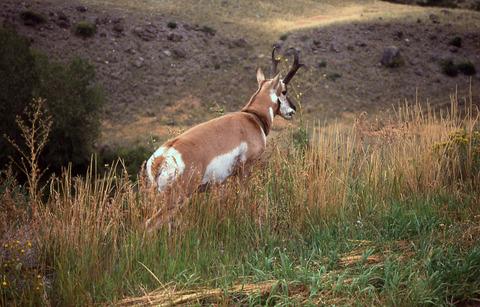Crews in Yellowstone National Park are working on turning back the clock on some lands that had once been used as agricultural fields. A pilot project getting under way north of Mammoth Hot Springs aims to restore native vegetation on 22 acres.
The restoration work is expected, in the long run, to benefit pronghorn antelope and other wildlife. The land in question is in the park along the Old Yellowstone Trail/ Yellowstone River corridor northwest of Gardiner, Montana.
The first phase of the project will begin with 22 acres of land being fenced. The fence will remain in place for approximately 10 years to keep wildlife out and allow the necessary work and time needed for native plants to re-establish. If funds allow, another two pilot areas totaling approximately 25-30 acres will be fenced next year. This project is the result of recommendations from a cooperative workshop sponsored by the National Park Service, Gallatin National Forest, and the Montana State University Center for Invasive Plant Management.
To explain what's going on, park interpreters are developing exhibits that discuss Native American and agricultural history of the area; the 1920s and 1930s acquisition of the land for low-elevation wildlife habitat; and the pilot restoration project are being developed and will be installed near the fenced area in the coming year.




Add comment